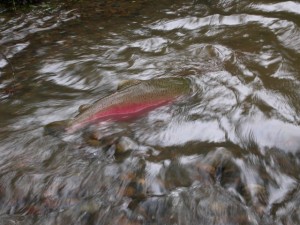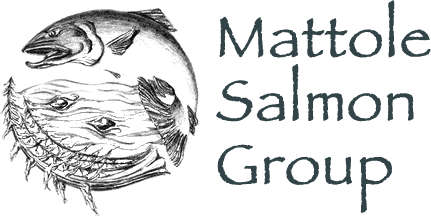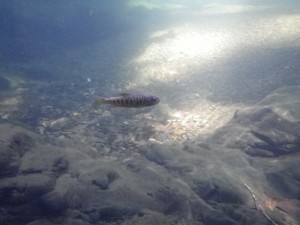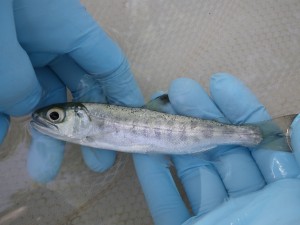Coho
Coho salmon are acknowledged to be the most imperiled of the Mattole River’s three native salmonid species. The coho salmon population in the Mattole is part of the Southern Oregon/Northern California Coast (SONCC) coho salmon Evolutionarily Significant Unit (ESU), comprised of populations inhabiting coastal streams from Punta Gorda, California north to Cape Blanco, Oregon. NOAA Fisheries listed the SONCC ESU as Threatened under the Federal Endangered Species Act (ESA) in 1997 (70 FR 37160).

Adult coho in riffle. Mattole watershed, 2002. Photo credit MSG Staff.
In 2005, the California Department of Fish and Game (CDFG) also listed coho salmon from Punta Gorda north to the California-Oregon border as Threatened under the California Endangered Species Act.
Coho salmon in the Mattole River represent the southern extent of the SONCC ESU. As such, they may be more genetically differentiated from populations nearer the center of their range, and thus contribute significantly to their respective species’ total genetic diversity and evolutionary potential (Scudder 1989; Lesica and Allendorf 1995).


